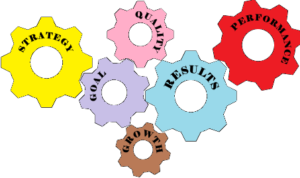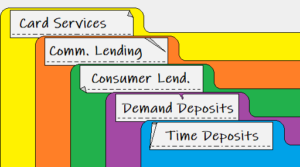Blog
System Assessment, Selection & Implementation – Part 1
Series Overview
In this blog series we will explore the full process that financial institutions face deciding on the best course of action for modernizing their current information technology. As with any complex situation it makes sense to it break down. By doing so we can readily understand the process and with this understanding we are better prepared to properly manage these individually.
While we will explore this process in consumable chunks this is not to say that each and every step, we navigate in this series is sequential. In fact, many times, the steps can be accomplished in parallel. It is up to the individual reader to make the determination of what logically must proceed and succeed any given step or what can be accomplished in parallel. In most cases it is best to engage an experienced individual in helping you to navigate these waters.
- Part 1: Assessment – Organizational Vision
- Part 2: Assessment – System / Application Needs
- Part 3: Assessment – Strengths & Weaknesses – COMING SOON!
Part 1: Assessment
Organizational Vision
When an organization undertakes, or even considers undertaking, an effort as complex as system modernization there is usually a driver. These drivers are as varied and include things like software going off vendor support, functionality hindering productivity, inability to support new compliance requirements, support for new products and services, acquisition of other businesses with differing systems to name a few. Instead, we’ll take a couple of examples that could be relatable to your particular situation and go from there. Regardless of the driver it is absolutely necessary that your organization determine your vision as it relates to the capabilities of information technology.When an organization undertakes, or even considers undertaking, an effort as complex as system modernization there is usually a driver. These drivers are as varied and include things like software going off vendor support, functionality hindering productivity, inability to support new compliance requirements, support for new products and services, acquisition of other businesses with differing systems to name a few. Instead, we’ll take a couple of examples that could be relatable to your situation and go from there. Regardless of the driver it is absolutely necessary that your organization determine your vision as it relates to the capabilities of information technology.
off vendor support, functionality hindering productivity, inability to support new compliance requirements, support for new products and services, acquisition of other businesses with differing systems to name a few. Instead, we’ll take a couple of examples that could be relatable to your particular situation and go from there. Regardless of the driver it is absolutely necessary that your organization determine your vision as it relates to the capabilities of information technology.When an organization undertakes, or even considers undertaking, an effort as complex as system modernization there is usually a driver. These drivers are as varied and include things like software going off vendor support, functionality hindering productivity, inability to support new compliance requirements, support for new products and services, acquisition of other businesses with differing systems to name a few. Instead, we’ll take a couple of examples that could be relatable to your situation and go from there. Regardless of the driver it is absolutely necessary that your organization determine your vision as it relates to the capabilities of information technology.
Example 1: Convert vs. Upgrade
In our first example we have a moderately sized community bank that is currently running an in-house core processing system that is approaching 10 years old. Technology debt is piling up on this system and the IT leader has informed the other executives that it may be less expensive to simply convert to a new core processing system. In addition, by following through on a conversion the organization could reduce its risk with an aged and continually aging system. Finally, there may be some added value of additional functionality that comes with the system replacement.
Who wouldn’t want to take advantage of saving money, reduce risk and adding functionality? All these advantages may well be true, and we’ll talk more about these in “New System Need” section. However, these advantages, on their own, should not be drivers to a core system replacement. Instead, an organization must broaden their view on technology. Technology, while certainly powerful is a tool and should be viewed as such. Any bank should determine how and when technology will help them achieve their goals.
Let’s say our bank has made the strategic goal to increase their customer base. They intend to achieve this goal through increased community outreach, additional product offerings, and enhanced services. Now this is something that technology, as a tool, can help achieve! Having the right core processing system that supports the latest, greatest and most in demand products could be key to reaching this goal. Further, having the right technology and technology partners in place could certainly help in the community outreach arena. Finally, technologies are tailored made for the service offerings.
The point here is make sure that the business strategies are driving the tool and the tool isn’t driving the business strategy.
Example 2: Which Product to Choose
For our second example we’ll look at a credit union that has a relatively new core processing system but a highly dated internet banking solution. This solution only provides their member base with the minimal of functionality. For example, when a member logs into the application they can review their account balances and see the transactions which have impacted their internal accounts. Essentially their online banking application is an “electronic checkbook ledger” and it lacks what is now standard functionality. It is surely impacting their members and they are probably losing members as well as having difficulty in gaining new members.
There are so many options when it comes to digital banking. In this case it is imperative that the credit union make the right choice when selecting their new digital banking platform. The credit union should be looking at the outside drivers to determine the solution which is right for their members. For example; is their member based geographically disbursed? Is the credit union considering adding new products in the near future which may impact the type of functionality that will be needed? Is the credit planning on targeting different types of members (i.e. consumer vs. commercial)? What type of requirements does our current core processing system have, if any, regarding a digital banking platform? The list goes on and on, but these are the things that must be considered.
Example 3: New Implementation
In our final example we have a relatively large bank that currently focuses on consumer customers but is starting their expansion into commercial customers as well. This effort is going to have a huge impact on the organization and making sure that it is successful is on everyone’s mind. The executive team has already laid the foundation for one of their most important assets in ensuring success and that is the employees which will drive and sustain this new division of the bank. They have also laid out the products and services they intend to provide to their new client base and have already started the marketing and business development cycles. The only thing left is making sure that they have the right technology tools in place.
In this case the bank has already set their strategic direction and has a very well-defined set of needs and probably wants that can be used in the technology toolset selection. In order to even start the next phase of the selection process it will be important that they address each of these wants and needs in a systematic way to ensure that none are inadvertently left behind. Since the strategy is set and the needs/wants determined it would be best for this organization to capture each of them in a categorized way. For example, categorizing these items by the system/application that will support them will help ensure that each is addressed in turn.
On this topic the one thing that people get hung up on is having a single need categorized into multiple categories. This is normal as the categories are almost never mutually exclusive. For example, there may be a need which easily fits into the tool categories of core processing and remote deposit. This natural and it should be noted in each category.
Conclusion:
You probably see a theme in all the examples and that is your organizational vision should drive your decisions. It is illogical to have your tool drive your vision or direction.
We’ve seen many organizations wrap their organizational direction and business processes around tools. This is akin to using Microsoft Excel to balance the bank daily simply because they already have the tool in place. Excel is an extremely helpful tool and I’ll be the first to admit that I’m an Excel junky. Heck, I’ll also admit that using Excel to balance a bank is better than the ledger books and adding machines of yesteryear. But wouldn’t it be so much easier to a purpose-built general ledger application that is tied to all your applications? Sure, it would!
In our next segment we’ll explore the process of matching our organizational vision and direction to system and application needs. We’ll even look at how we get a few wants for little to no extra financial burden and even provide some easy to use templates. Stay tuned!



